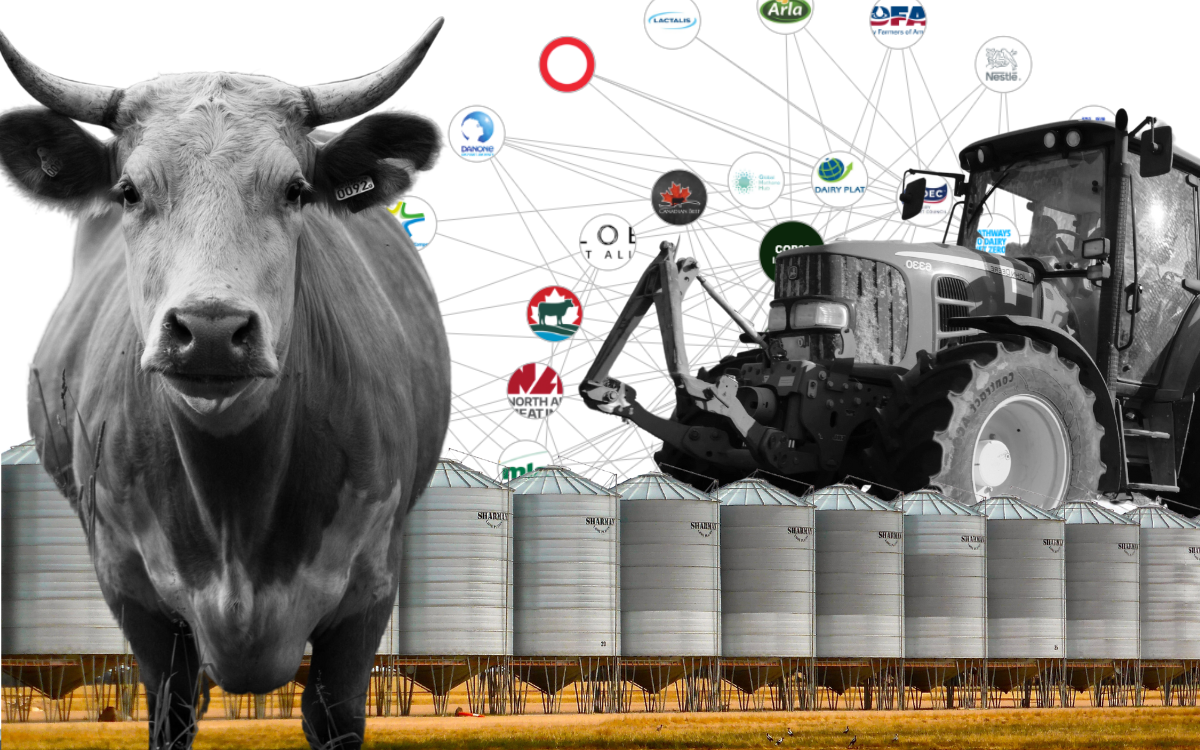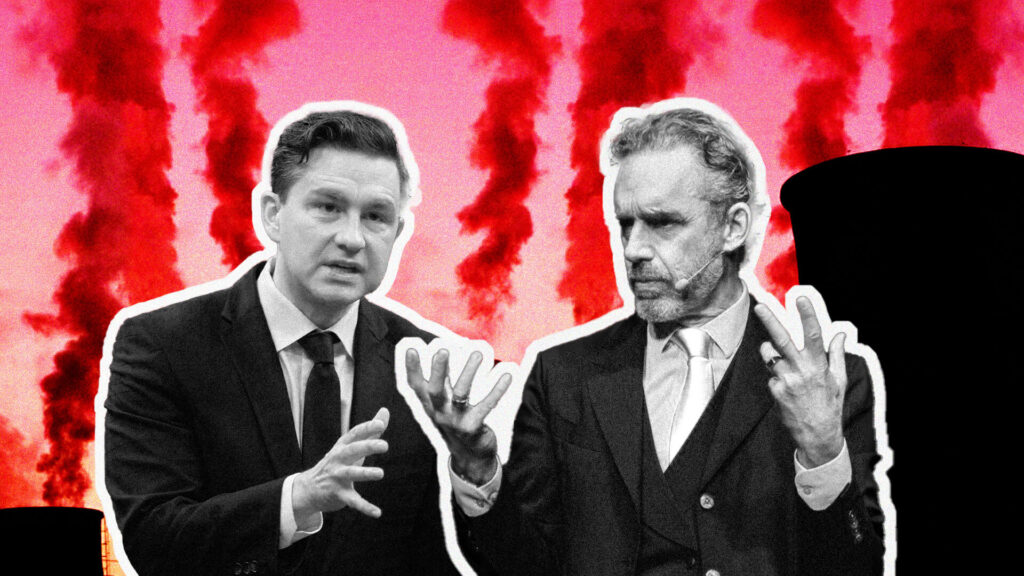As this year’s climate summit gets underway in Dubai, powerful food and farming companies are well positioned to ensure their interests are protected. They will use their connections to network, lobby – and even raise investment.
These agri-giants will be rubbing shoulders with over 80,000 participants – the highest attendance of any climate conference – which these days comes with increased media fanfare and activity, including protests, side events, drinks and dinners happening in and around the main event.
Oil and gas has dominated discussions at past COPs, which have focused on the need to cut greenhouse gas emissions from the energy and transport sectors to tackle dangerous levels of global warming.
This year will be different. The COP28 host United Arab Emirates is using its presidency to firmly press the need for food transformation. On Friday it released the Emirates Food And Farming Declaration, which will require countries that sign on to consider food and land use in their climate-reduction targets.
The UN’s FAO is also set to release the first draft of its roadmap to achieving a 1.5 C-aligned global food system. This will be the first time a respected global institution has mapped out a pathway that can help measure the progress of agriculture’s emission-reduction plans.
And that’s why we can expect food and farming companies – responsible for over a third of greenhouse gas emissions – to be busy in Dubai as they try to set the tone of conversations and keep binding targets off the table.
In our interactive Routes to Influence Map below, DeSmog has plotted the extent of the opportunities open to the world’s most powerful and polluting food and farming companies and lobby groups to influence debates at COP28.
The clickable diagram maps the major firms who will be attending this year, how they are implicated in the climate crisis and pinpoints the spaces they will be moving in.
These many routes to influence – from sponsoring pavilions to promoting unproven solutions in COP28 initiatives – put agribusiness in prime position to stymie regulatory action.
Recent obstruction by agribusiness along these lines includes: securing weak voluntary commitments to delay action and water down targets, running pro-meat PR campaigns and promoting unproven, greenwashing solutions.
Who decisionmakers decide to listen to will determine whether the UAE summit will deliver on results that safeguard climate and nature.
Will COP28 result in the science-aligned transformation of food systems that civil society is calling for in Dubai that will tackle dietary changes and destructive farming? Or, will it lock in an “innovation”-focused, industry-led plan to produce more food, with a slightly lower footprint?
As this DeSmog analysis shows, it’s clear where the power lies.
This interactive maps show the major agri-giants in attendance this year and how they are set to navigate the climate summit. Map design: Clare Carlile.
Routes to Influence 1: Joining a Country Delegation
As food’s environmental impact has come into sharper focus in recent years, agriculture’s biggest companies have also started turning out in ever greater numbers at COP summits.
This year, industry attendees include major polluters such as the world’s largest meat company JBS, along with dairy giants like Nestlé and Danone. Major pesticide and fertiliser producers such as Bayer and Nutrien, who attended last year, will be back.
Corporations cannot attend in their own right, but they can join the delegations of trade associations, business confederations or countries. The latter gets you a pink badge and coveted access to the UN Framework Convention on Climate Change (UNFCCC) diplomatic process.
Big companies which have previously accessed COP in this way include JBS, which came in with the Brazilian delegation for COP27 in Egypt. Meat lobby group, the Canadian Cattle Association, attended with Canada in 2022. This year, meat industry planning documents seen by DeSmog show the trade group Meat & Livestock Australia hopes to attend as part of its country delegation.
“A pink badge is like a country badge, which allows you into the negotiations, so you can track what’s going on,” explains Corporate Europe Observatory researcher Pascoe Sabido, who has extensively tracked the influence of the fossil fuel industry at the annual COP climate summits.
This insider ticket makes companies party to which countries are pushing for strong climate targets and who is saying things that go against their interests. “You can then of course go and talk to them,” says Pascoe. “You can also talk to your own negotiators and say ‘look what so and so is doing, it’s against our interest’ and get them to move.”
He explains that companies can have real world impact in this way. They can, for example, use that information to get ministers to threaten to withdraw a trade deal unless another country agrees to adjust its climate stance.
The fossil fuel industry has often been invited to country delegations, whose numbers have increased nearly sevenfold since the first COP 1995. In 2021, Canada invited tar sands company Suncor to COP26 in Glasgow, and BP’s former chief executive Bernard Looney attended unexpectedly as a guest in Mauritania’s COP27 delegation last year.
Route to Influence 2: Observers to the Talks
Companies, trade groups and NGOs that are unable to join a country delegation can travel as part of a trade group that is registered with the UNFCCC. These attendees come to COPs as “observers” to the talks, with the hope of influencing discussions from the outside.
Registered observer groups include global lobby groups – such as the pesticide industry’s main trade association CropLife, the International Fertilizer Association and the Global Roundtable for Sustainable Beef – as well as civil society NGOs.
These groups can’t access the negotiations. But they can still make an impact at COPs by speaking to decision-makers as they come in and out of high-level talks.
European oil giant Shell has publicly credited its trade body, the International Emissions Trading Association (IETA) with shaping the final text of the Paris Agreement at COP21 in its favour. The IETA (which features in DeSmog’s Routes to Influence map) also represents multiple agricultural firms.
Major firms linked to industrial agriculture that attended COP last year via this route include Bayer, the world’s largest pesticide firm, and Cargill, a global grain trader and meat company.
“I guess the goal of these trade associations is really to follow everything,” says Sabido. “They track all the negotiations, make sure that members’ interests are being represented. They also produce position papers, and they try to create alternative narratives – in a big way.”
Route to Influence 3: Pavilions
Pavilions are spaces within the conference hall where companies and groups set up booths, host displays and hold events to promote their key asks for policymakers and the public. They offer a significant PR opportunity, and the chance to hobnob with decision makers.
While the negotiating process at COPs follows a relatively similar pattern each year, with talks that span a fortnight, the spectacle and activity around them has grown significantly.
These pop-up stations – 225 of them this year – have a captive audience of policymakers, diplomats and the world’s media – many of them milling around with time to kill between talks.
For a company or trade group, there are three ways to use the pavilion space to their advantage.
The first is to collaborate with a country hosting a pavilion. For example, oil major BP found a space to speak at COP26 by taking part in a side event hosted by Russia’s official pavilion. The meat sector plans to replicate this tactic at COP28 by targeting the pavilions of major meat producing countries such as Australia and the US.
The second way is to apply to host a pavilion, which can cost upwards of a million dollars. The International Emissions Trading Association – a lobby association comprised of some of the world’s largest fossil fuel producers and greenhouse gas emitters – will host a “business hub” in Dubai, which gives a platform to speakers from its member companies. They include pesticide firm Bayer, fertiliser company Nutrien and meat packer Cargill.
A third, slightly cheaper option is to sponsor pavilions that are hosted by other COP observer groups. For up to $200,000 you can promote your brand, curate content and create opportunities to shape events and media output.
Pesticide trade association CropLife International, meat trade association the North American Meat Institute and dairy trade group the U.S. Dairy Export Council are among those sponsoring the industry-friendly Inter-American Institute for Cooperation on Agriculture (IICA)’s pavilion.
Sabido says the pavilions, where CEOs, lobbyists and government officials all gather, offer a “really good opportunity to lobby”. It can also be “important for coming up with common positions, being seen as being on the same side and providing legitimacy,” he says.
Route to Influence 4: COP Initiatives
A wide array of “initiatives” are launched and promoted at COPs, often at the various country pavilions. These voluntary initiatives can move faster than negotiations, and aim to build support and raise new finance for climate-related issues.
Ben Lilliston from the Institute for Agriculture and Trade Policy expects them to be a key arena for action on food at this year’s COP. “On food, I don’t think anything significant is going to come out of the negotiations themselves this year,” he says.
As the Routes to Influence map shows, these initiatives will be a key focus for agricultural interests at COP28. Sabido warns that these groups will often frame debates in selective ways and contain significant blindspots.
One example is AIM for Climate, or Aim4C (listed under “COP28 Initiatives” on the map) which has claimed the agriculture spotlight at the last two summits. The technology-focused “sustainable farming” partnership, which is led by the UAE and U.S., claims to have raised $13 billion for climate-friendly investments to date.
The partnership has been criticised for prioritising business interests over climate action, and for sidelining smallholder voices. Analysis by DeSmog last year found that of roughly 300 partners, just seven percent were based in Africa. Not a single group representing Indigenous communities was listed among Aim4C’s “knowledge partners”.
Aim4C is expected to highlight over 50 “innovation sprints” this year – mostly led by major agribusinesses. Campaigners have previously criticised the sprints for promoting industry friendly techno-fixes that are unproven at scale, such as the Greener Cattle Initiative, which aims to reduce methane emissions from cattle by changing their diet.
As COP28 host UAE is also looking to leave its mark. As part of its presidency, it is rolling out new initiatives such as the Regenerative Landscapes project (see “COP initiatives” on the Routes to Influence map). The project will work to increase the uptake of “regenerative practices”, a concept that has been described as too vague and an easy target for greenwash.
Partners of the Regenerative Landscapes initiative include fertiliser giants Yara and OCP. Civil society groups have raised concerns that these influential companies are crowding out research that advocates for more transformational changes to the food system, like reducing damaging fossil-fuel based inputs in favour of natural fertilisers and other holistic, climate-friendly farming techniques.
A presentation made by the UAE presidency shows that several major agribusiness companies are also mooted for the initiative’s steering committee, such as processing firms Pepsico and Unilever and grain traders like Archer Midland Daniels and Louis Dreyfus Company.
Corporations can also bring initiatives of their own. Major dairy producers will be promoting Pathways to Dairy Net Zero (P2DNZ) at COP28 (see Routes to Influence for more on P2DNZ). While industry says the venture aims to address dairy emissions, critics say it is actually geared at expanding new dairy markets in the Global South, which will ultimately lead to an increase in emissions and pollution.
Doing Business
Companies can use COPs to shape negotiations, lobby decision-makers and boost their brands.
But there is another important, often overlooked function of COPs: the huge commercial opportunity they represent.
When COPs are described as trade shows, this is not just a turn of phrase. Last year at COP27, fossil fuel companies signed five new gas deals with governments the week prior, and nine during the summit itself. Sultan al-Jaber this week denied using this summit to pursue oil and gas deals.
Lilliston from campaign group IATP believes that some of the companies attending COP28, such as meat giant JBS, will be hoping to attract more funding from governments and investors. “I think some of them are positioning themselves in the marketplace as having climate solutions and being sustainable, and they’re raising money from investors around that,” he says.
As well as existing government subsidies, climate fears are making new pots of money available to the agribusiness industry, including from the United States’ Inflation Reduction Act – which offers $19.5 billion over five years for “climate smart” agriculture.
This term, which has no widely agreed definition, encompasses contested practices such as the ongoing use of pesticides, which has led to concerns that the term “climate smart”could be used to “greenwash” polluting forms of agriculture.
Initiatives such as Aim4C and Pathways to Dairy Net Zero will make announcements at COP28. They plan to unlock new sources of funding – both private and public – for business-led voluntary initiatives. Critics say that these industry-shaped initiatives fall far short of the deep cuts to warming gases that are urgently needed, and studiously avoid any reference to the radical reductions in meat and dairy consumption in the rich world, which are called for by climate science.
Mohamed Adow from Powershift Africa, spoke out against what he called “dangerous distractions” at a recent webinar. Speaking from his native Kenya, which has just been hit by intense floods after the worst drought in living memory, he gave a simple recipe for a positive COP: “We need massive, rapid and sustained reductions, not false solutions.”
Subscribe to our newsletter
Stay up to date with DeSmog news and alerts







